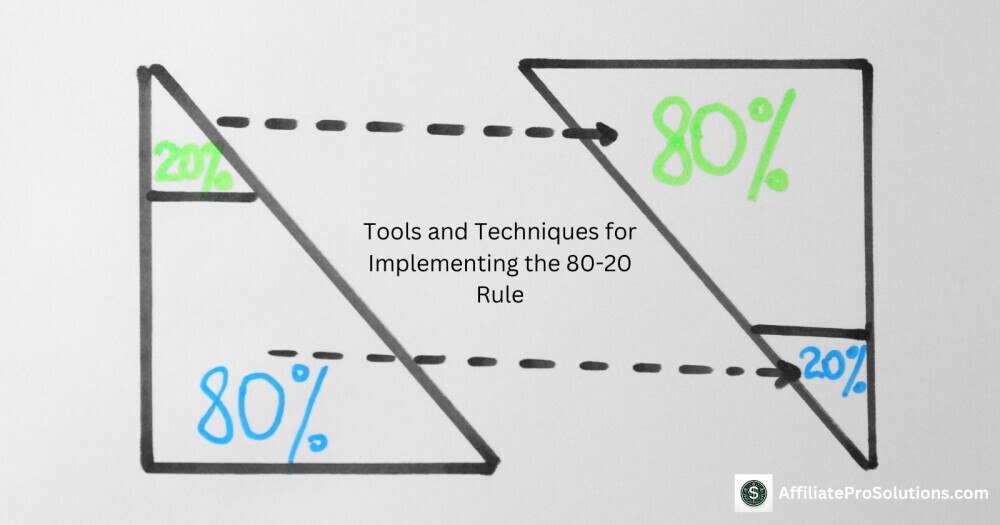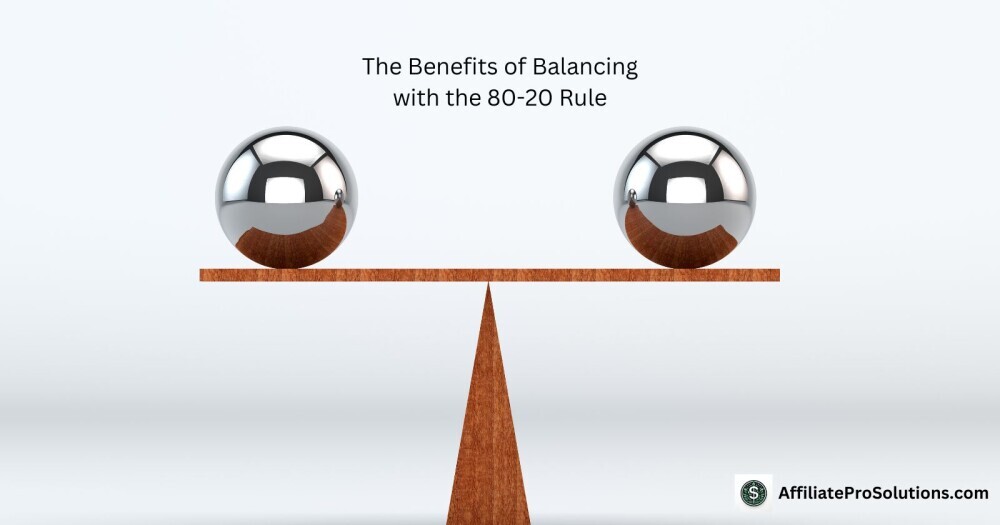Topic – Business Management
Post Reading Time – 13 Minutes
You’ve probably heard of the 80-20 rule, also known as the Pareto Principle. The idea is simple, and it says that 80% of your results come from just 20% of your efforts. When you apply this to time management, it means that a small portion of your tasks are responsible for most of your progress.
The 80 20 Rule For Time Management helps you to focus on the tasks that actually matter, so you’re not wasting energy on things that don’t really make a difference. Are you struggling to get things done, and always seem to be behind?
What The 80 20 Rule Means In Time Management
The 80 20 Rule For Time Management is based on the idea that 80% of your results come from just 20% of your efforts. Instead of trying to do everything, this rule helps you to concentrate on the tasks that actually make a difference while spending less time on things that don’t contribute much to your progress.
By identifying and giving priority to these high impact tasks, you’ll be able to work more efficiently and achieve better results, without constantly feeling like you’re running out of time.
Please check out the checklist for Applying The 80 20 Rule For Time Management
What You’ll Learn From This Post
- The 80 20 Rule For Time Management Helps You Focus – A small part of your work brings the biggest results, so it makes sense to concentrate on those tasks.
- You Don’t Need To Do Everything – Prioritizing the most important tasks can help you get more done without constantly feeling like you’re behind.
- Some Tasks Aren’t Worth Your Time – Recognizing what doesn’t really matter lets you spend more time on what actually makes a difference.
- Simple Changes Can Improve How You Work – Small adjustments, like time audits and batching similar tasks, can make your day more productive.
- The Right Tools Can Keep You On Track – Using task management apps and other helpful strategies can make it easier to stay organized and focused.

Start Your Training
- Build Your Website & Earn Revenue
- Support, Tools & Training Included
- Complete with Business HUB
- Artificial Intelligence Writers
- My Personal Support
- No Risk Free Starter Account
Think about your to do list for a moment. That never ending list of tasks that seems to grow faster than you can check things off. What if you could get a lot more done by concentrating on fewer things? That’s exactly what this principle helps with.
By moving your attention to the high impact tasks, you’ll stop wasting time on things that don’t contribute that much and start making proper progress.
When you give your attention to what brings the best results, you’ll start seeing improvements in how you manage your time.
How To Focus On The Tasks That Matter Most
In order to apply the 80-20 rule, you need to start by recognizing which tasks bring about the best results.
But how do you find these tasks among everything on your list?
You need to look for the activities that are most connected to your goals and have the potential to make the biggest difference.
Finding these high impact tasks can take a bit of thought. Think about what you’re trying to achieve. Which tasks get you closer to that? Those are the 20% that deserve the most attention.
Often, these are the ones that require creativity or clever thinking, rather than just your time.
Prioritizing them doesn’t mean ignoring everything else. It just means making sure your best energy and concentration go where they count the most.
This could mean setting aside uninterrupted time for the more important projects or deciding that some emails will just have to wait until later.
A simple way to organize your workload is by separating tasks into high impact and low impact. Start with the most important ones when your energy is at its highest, and let the smaller tasks fill in the other gaps.
Are there things on your list today that don’t really need to be a priority? When you look at what really matters, you’ll see real progress without feeling like you’re always trying to catch up.
If you want to read more about the Pareto Principle, you can check out this Wikipedia guide which provides further information.

How To Use This Rule To Manage Time Better
Putting your efforts into the tasks that really make a difference is only part of what the 80-20 rule is all about.
Clearing out the less important work matters too. You need to recognize the activities that clutter your day up and don’t do much to help you reach your goals.
Getting rid of or minimizing these distractions isn’t always that straightforward, I know. It is important though, to start figuring out which tasks take up your time but don’t bring you much value.
Can any of these tasks then be delegated to someone else or even removed completely?
This doesn’t mean you just ignore them forever, but handling them in a way that keeps them from taking over your schedule.
Your workflow will improve a lot when you put your energy into the tasks that actually move things forward.
Think about your daily routine. Are there repetitive tasks that could be automated or done more efficiently? Even some small changes in how you handle them can help free up time for the more important work.
When your schedule is more clear, your efforts will have a bigger impact. The less time you waste on low value tasks, the more mental space you’ll have for creativity and proper planning.
Look at your task list today.
Is there anything you can change, simplify, or just cut out completely to give the most important tasks the attention they need?
In the end, what matters the most is making sure your time goes where it counts.

Common Missteps and Smart Strategies
The 80-20 rule often gets misinterpreted as a perfect formula, but it’s not. It’s actually just a way to improve how you manage your time.
You don’t need to worry about hitting exact percentages. Just think of it as using the idea to be more efficient.
You need to stay flexible and adjust things as you need without getting caught up in any strict calculations.
Every task has some value, so it’s not a good idea to take things to the extreme and ignore your lower priority tasks completely. Instead, try to manage them well by fitting them into the smaller gaps in your schedule rather than the main slots.
If smaller tasks start to pile up, they can easily become a distraction. Therefore, keeping them under control will make it easier to concentrate on what actually matters.
Additional Business Management Info & Resources
A simple way to make the most of the 80-20 rule is to use daily habits that help you prioritize your tasks without overcomplicating things.
Start your day by deciding which tasks are the most important. This keeps any distractions away and helps make sure the essential work gets done first.
Another helpful trick is batch processing. This is basically grouping similar low priority tasks together and handling them all at once.
This frees up more of your time and reduces the mental effort of switching between different types of work.
Think about someone who’s constantly busy with meetings, emails, and deadlines. If they can figure out which ones actually matter, they can adjust their time and focus on the work that makes a difference.
This makes multitasking less stressful and helps set clearer priorities.
Do you have any tasks that take up too much of your time without giving much in return?
Taking a step back and reviewing your priorities can help you stay focused on what actually moves things forward.

Tools And Techniques For Implementing The 80 20 Rule
In order to use the 80-20 rule effectively, you need the right tools and techniques to help you stay on course.
With so many distractions out there, and tasks waiting for your attention, technology can make it easier to concentrate on what matters.
Task management apps can be useful for keeping the high impact tasks at the front. They also help with organizing your day, setting reminders, and making sure you stay focused on the work that brings in the results.
Doing some regular time audits is another good habit to get into. If you review how you spend your time, you’ll start to see where changes might be needed.
Most of the time, this will help you find the tasks that waste your time. These are the ones that you could either get rid of completely or manage more efficiently.
A common mistake I see all the time is people overcommitting, taking on too many tasks all at once.
Instead, it is better to keep rethinking your workload and focus on the tasks that actually help you reach your most important goals. Checking in on this regularly will make sure your time is being spent where it matters.
Another issue that can throw things off is misidentifying the high impact tasks.
It’s a good idea to assess them from time to time to make sure they still match up with your goals. Priorities can change, so being flexible helps keep you on track.
Think about the tools you’re using at the moment.
Are they helping you focus on what’s important, or are they just adding more clutter?
Choosing the right apps and building some good time management habits can make all the difference in making the 80-20 rule work for you.
Your Checklist For Applying The 80 20 Rule For Time Management

| Find The Tasks That Get Results | Look at what you do each day and figure out which tasks actually move things forward. |
| Cut Down On The Work That Doesn’t Matter | If something isn’t making a real difference, stop giving it so much time. |
| Get The Most Important Tasks Done First | Use your best energy on the tasks that count the most before worrying about the small stuff. |
| Group Similar Tasks Together | Handle things like emails, calls, or admin work in batches instead of letting them break up your day. |
| Check Where Your Time Is Going | Every now and then, look back at how you’re spending your time and make changes if you think they’re needed. |
| Use Simple Tools To Stay On Track | A basic task manager or even a to-do list can help you focus on what actually needs to be done. |
| Be Flexible And Keep Adjusting | The 80-20 rule isn’t a strict system. Keep paying attention to what’s working and make changes if you think they’re needed. |

Frequently Asked Questions – FAQs
How Do I Know Which Tasks Are In The 20%?
Look at what actually moves things forward. What tasks actually bring in results? These are usually the ones that help you progress toward your goals. If something isn’t making much of a difference, it’s probably part of the 80%.
Does This Mean I Should Ignore The Other 80%?
No, but you shouldn’t let the lower priority tasks take up all of your time. If something needs to get done but doesn’t have a big impact, try to delegate, batch, or spend less time on it so it doesn’t pull you away from the more important work.
Can I Use The 80 20 Rule Outside Of Work?
Yes! You can use it for anything, like managing your money, fitness, or even your personal projects. Most of the time, a small percentage of your efforts bring in most of the results, so it makes sense to focus on what actually works.
What If My Job Requires A Lot Of Low Value Tasks?
Not everyone has full control over their work, but you can always find ways to be more efficient. Try handling all of your low impact tasks in batches or setting clear time blocks so they don’t interrupt the work that really matters.
How Can I Start Using The 80 20 Rule Today?
Start by writing down what you do in a day and highlighting the tasks that actually push things forward. Focus on those first, and don’t waste your time on things that don’t help you get results.

The Benefits of Balancing with the 80-20 Rule
By using the 80-20 rule effectively, you can give a big boost to your productivity levels.
By focusing on the high impact tasks, you’ll start getting more done while giving yourself a break from any unnecessary work.
One of the biggest benefits is reduced stress. There’s nothing worse than having to work in an environment that wears you down!
When you clean up your to do list and get your priorities in order, managing your time becomes a lot easier. This can bring you a sense of calm and help you go through the day feeling more in control.
Applying the 80-20 rule also means having more time for your personal goals and activities outside of work.
With less time wasted on the low impact tasks, you’ll have more freedom to concentrate on what you actually enjoy and spend time on things that matter to you.
How I Apply The 80 20 Rule In My Own Time Management
When I first started trying to manage my time better, I struggled with getting the right things done. My to do list never seemed to get any shorter, and by the end of the day, I felt like I’d been busy but hadn’t really made any progress.
The biggest change came when I stopped trying to do everything and started focusing on what actually moved things forward. I began putting more effort into the tasks that made a real difference instead of wasting all of my time on things that didn’t matter that much.
Since making that change, I’ve been able to get more done without feeling drained all the time. I don’t worry as much about the smaller things now, and I’m more in control of how I use my time. Learning to apply the 80-20 rule properly has helped me work in a way that actually makes more sense.
Now, take a look at your daily routine for a moment. Where can you apply this principle to make better use of your time?
I know finding this balance doesn’t happen fast, but some initial small changes can make a big difference.
What high impact tasks will you focus on today to free up more time for what actually matters?
I hope this information here on the 80 20 rule for time management has helped you out!
Thank you, and please leave your thoughts and comments below.
Chris
Wealthy Affiliate
This is where my journey into the online world began, and it’s still the only community I trust for genuine, high quality guidance on building a business and earning money online.

The Wealthy Affiliate platform offers everything you need – training, hosting, tools, resources, and live assistance – all in one place.
If you’re ready to start your online business, this is the perfect place to begin.
I highly recommend Wealthy Affiliate for its unmatched support and resources.
About Chris Towers – Follow Me

My name is Chris Towers, and I’m here to help you make sense of affiliate marketing and build an online income. Through years of experience, I’ve learned what works, and I want to share those lessons here to help you succeed.
Related
- The 80 20 Rule For Time Management – Get More Done
- Time Management Tips For Working At Home – Get More Done
- What Is The 80 20 Rule About? – Learn How to Apply It
- The Importance Of Goal Setting For Business Websites & Blogs
Just to be open with you – My site includes links that are part of affiliate programs. If you click on these links and buy something, I might get a small commission. There’s no additional cost for you whatsoever. It’s a simple way to support the content I create for you. I hope you are OK with this & thank you for your understanding.





Hi Chris. I think you must have had me in mind when writing this post! I am the perfect example of someone who does 80% of the work and then tails off. I recently knocked a wall down in my living room, changed the electrics and painted the room but I still now have to finish those niggling little things like the skirting boards, which I’m struggling with. Instead, I’ve started another project to build a bookcase! I love that you have explained things in simple terms that anyone can understand. Thank you.
I will go through this article again with a fine tooth comb and follow the strategies that you suggest to get things finished. Now where did I put that to-do list?
Chris
Haha thanks Gail, yes I must have 🙂
I know what you mean, you’ve done all the hard work, and now it’s just those last few bits. I think we’ve all been there and I think it’s always easier to start something new rather than just finish off with the small details.
Maybe once the skirting boards are done, the whole project will finally feel complete for you? That bookcase sounds like a plan too, at least you’re keeping things interesting!
Hope the tips in the post help you out. And if you find that to-do list, let me know, I keep losing mine too 🙂
Thanks again Gail, nice to hear from you.
Chris
Hi Chris
I like the way you explained the 80/20 rule here. It’s something I’ve heard about before, but this made it a little easier to see how it applies to my everyday work.
It has made me think about how much time I waste. Do you have any advice that helps you to figure out which tasks make the biggest difference?
Thanks
Angela M 🙂
Hi Angela and thanks.
Yes I know, it’s easy to lose track of where our time goes, and it used to happen to me a lot.
What helps me the most is looking at all of my tasks and asking, “If I only got a few of these things done today, which ones would actually make a difference?”
Those are usually the high impact ones.
I also try to keep check on how much time I spend on the smaller tasks that don’t really change that much. This way I can see if they’re taking up too much time. If they are, I either batch them together or cut them down.
Hope that helps!
Chris